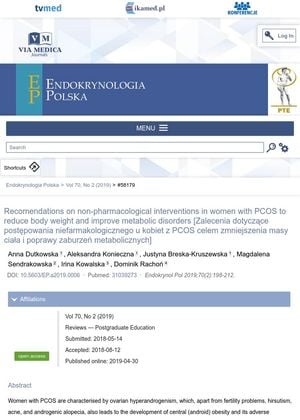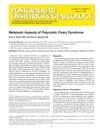Recommendations on Non-Pharmacological Interventions in Women with PCOS to Reduce Body Weight and Improve Metabolic Disorders
April 2019
in “
Endokrynologia Polska
”
PCOS ovarian hyperandrogenism hirsutism acne androgenic alopecia central obesity insulin resistance atherosclerosis arterial hypertension type 2 diabetes mellitus cardiovascular disease omega-3 fatty acid vitamin D inositol polycystic ovary syndrome high androgen levels male-pattern hair loss heart disease fish oil myo-inositol

TLDR Healthy diet and exercise are important for women with PCOS to manage weight and metabolic issues, and supplements like omega-3, vitamin D, and inositol may help.
The 2019 review paper discussed non-pharmacological interventions for women with Polycystic Ovary Syndrome (PCOS) to manage body weight and metabolic disorders. PCOS often leads to ovarian hyperandrogenism, causing fertility issues, hirsutism, acne, androgenic alopecia, and central obesity. This obesity can lead to metabolic consequences like insulin resistance, atherosclerosis, arterial hypertension, and type 2 diabetes mellitus, potentially resulting in cardiovascular disease. The paper emphasized the importance of healthy dietary habits and physical exercise in managing PCOS symptoms and associated health risks. It also suggested potential benefits of omega-3 fatty acid, vitamin D, and inositol supplementation. However, it noted the high prevalence of depressive and anxiety symptoms in women with PCOS, indicating the need for comprehensive treatment approaches addressing both physical and mental health. The paper did not provide specific numbers of people studied or specific results from studies.

